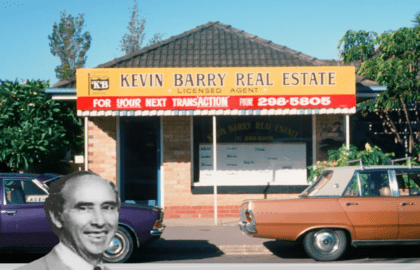Interest Rate Outlook – Tuesday 4 February 2014 by Bank SA
– The Governor’s Statement presented a realistic assessment of the Australian economy. There is reason for optimism but risks remain.
– The RBA, however, seems much more confident in comparison to previous commentary that low interest rates and the lower Australian dollar will result in stronger growth beyond the short term.
– The Statement signalled a period of stability for the cash rate. For any movement to occur, up or down, economic outcomes over the next few months would need to be well wide of current expectations.
– The RBA has noted the difficulties faced by emerging markets but the Statement’s overall tone regarding the global economy was positive.
– There was a notable omission in today’s Statement. There were no references to the AUD being “uncomfortably high”. Thus, the RBA seems comfortable with the current levels of the AUD in its role in rebalancing growth in the economy.
– We remain comfortable with our long-held view that the RBA will be on hold for the bulk, if not all, of 2014. After that it could be time for rates to rise from their historically low level.
Below is the Governor’s statement interspersed with Bank SA’s views.
RBA Statement: At its meeting today, the Board decided to leave the cash rate unchanged at 2.5 per cent.
Since the Board’s previous meeting, information on the global economy has been consistent with growth having been a bit below trend in 2013, but with reasonable prospects of a pick-up this year. The United States economy continues its expansion and the euro area has begun a recovery from recession, albeit a fragile one. Japan has recorded a significant pick-up in growth, while China’s growth remains in line with policy makers’ objectives. Commodity prices have declined from their peaks but in historical terms remain high.
Bank SA’s view: The opening paragraph is positive about the outlook for the global economy and fits well with our view of a slow, synchronised expansion in 2014. The US is pulling back on its stimulus measures because its economy is improving and Japan’s stimulus measures have lifted activity.
RBA Statement: The Federal Reserve has begun the process of curtailing stimulus measures but financial conditions overall remain very accommodative. Long-term interest rates and most risk spreads remain low. Equity and credit markets remain able to provide adequate funding, but for some emerging market countries conditions are considerably more challenging than they were a year ago.
Bank SA’s view: Monetary policy in the major economies remains conducive to borrowing. The dark cloud on the horizon is emerging markets which are seeing capital outflows following the US decision to cut back its monetary stimulus. Conditions in emerging markets are on a stronger footing than in 1997 when the ‘Asia Crisis’ hit. National debts are relatively lower and foreign currency reserves have been built up. This is not to say that the uncertainties surrounding emerging markets will not feed upon themselves and create further volatility.
RBA Statement: In Australia, information becoming available over the summer suggests slightly firmer consumer demand and foreshadows a solid expansion in housing construction. Some indicators of business conditions and confidence have shown improvement. At the same time, with resources sector investment spending set to decline significantly, considerable structural change occurring and lingering uncertainty in some areas of the business community, near-term prospects for business investment remain subdued. The demand for labour has remained weak and, as a result, the rate of unemployment has continued to edge higher. Growth in wages has declined noticeably.
Bank SA’s view: This is a balanced assessment of the Australian economy. We cannot pretend that a decline in resource project construction will not act as a drag on the economy. At the same time there are areas of growth and these will be encouraged by a stronger global economy and by the low interest rate environment.
RBA Statement: Inflation in the December quarter was higher than expected. This may be explained in part by faster than anticipated pass-through of the lower exchange rate, though domestic prices also continued to rise at a solid pace, despite slower growth in labour costs. If domestic costs remain contained, some moderation in the growth of prices for non-traded goods could be expected over time.
Bank SA’s view: In late January, we received Q4 inflation data which was higher than our expectations and those of the RBA. The RBA does not appear too concerned about the recent higher inflation readings, and continues to believe that domestic or non-tradables inflation will moderate given that “domestic costs (wages) remain contained. There remains a risk that inflation could breach the RBA’s 2 to 3 percent inflation target if domestic inflation does not come down.
RBA Statement: Monetary policy remains accommodative. Interest rates are very low and savers continue to look for higher returns in response to low rates on safe instruments. Credit growth remains low overall but is picking up gradually for households. Dwelling prices have increased further over the past several months. The exchange rate has declined further, which, if sustained, will assist in achieving balanced growth in the economy.
Bank SA’s view: The exchange rate is no longer “uncomfortably high”, according to the RBA. This would suggest that the RBA is comfortable with current levels of the AUD (around 87-88 US cents). In time, this would assist trade-exposed sectors of the Australian economy. Given the Australian dollar has weakened; it lessens the need for further stimulus via the cash rate.
RBA Statement: Looking ahead, the Bank expects growth to remain below trend for a time yet and unemployment to rise further before it peaks. Beyond the short term, growth is expected to strengthen, helped by continued low interest rates and the lower exchange rate. Inflation is expected to be somewhat higher than forecast three months ago, but still consistent with the 2-3 per cent target over the next two years.
Bank SA’s view: The RBA recognizes that growth will remain below trend in the short-term, and that the unemployment rate will rise further. However, the RBA seems much more confident in comparison to previous statements that low interest rates and the lower Australian dollar will result in stronger growth beyond the short-term.
RBA Statement: In the Board’s judgement, monetary policy is appropriately configured to foster sustainable growth in demand and inflation outcomes consistent with the target. On present indications, the most prudent course is likely to be a period of stability in interest rates.
Bank SA’s view: The RBA view is in accord with our view on interest rates. It appears to be content with its current settings and is prepared to be patient while the economy responds to what are still historically low interest rates.
Hans Kunnen, Senior Economist
Ph: 02-8254-8322
and
Janu Chan, Economist
Ph: 02-8253-0898
Interest Rate Outlook – Tuesday 4 February 2014 by Bank SA
Follow the Christies Beach real estate blog for more interesting articles.








